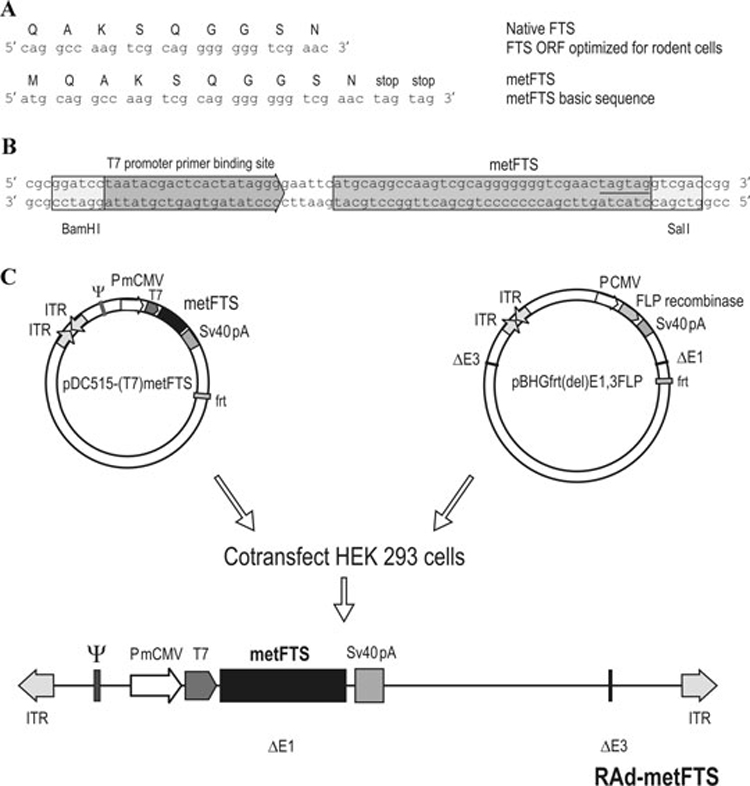Figure 1.

DNA constructs encoding the biologically active serum thymus factor (FTS) analogue (metFTS) and assembly of an adenoviral vector (RAd-metFTS) that harbors the synthetic gene for metFTS. A DNA sequence coding for native FTS was designed for optimal expression in rat cells. By adding an ATG starting codon upstream and two stop codons downstream of this sequence, it was converted into an open reading frame (ORF) for the analogue metFTS (A). This metFTS ORF was used to generate a construct to be cloned in the shuttle vector pDC515. The construct included the phage T7 promoter primer-binding site, which was used for sequencing purposes (B). The shuttle pDC515-metFTS was generated by inserting the T7-metFTS sequence into the BamHI and SalI sites of the multiple cloning site of the shuttle pDC515. This construct was used to generate RAd-metFTS (C). PmCMV, mouse cytomegalovirus promoter; frt, recognition element for the yeast FLP recombinase; ITR, inverted terminal repeats; ΔE1 and ΔE3, deletions in the Ad5 genome; SV40, simian virus 40 polyadenylation signal;ψ, packaging signal. From Ref. 50, used with permission.
